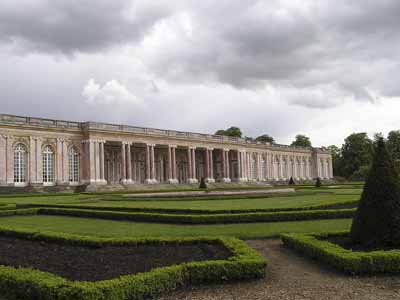The Palace of Versailles: The world's most opulent playground for royalty! A chateau large enough to house 6,000 courtiers! A palace fit for a king!
And not just any king, but Louis XIV, the "Sun King," who reigned for 72 years and whose self-glorification knew no bounds. Starting in 1661, he transformed a humble hunting lodge into a glittering palace. He drained swamps and moved whole forests to create 250 acres of formal gardens, tree-lined paths, flowerbeds, lakes, and fountains. And this filled only a small portion of the grounds -- the entire estate covered 2,000 acres.

pictures of famous landmarks.
Versailles served as France's political capital and the focal point of the court from 1682 until 1789. It was Louis XIV's motive to remove himself (and his scheming nobles) from the political intrigues of Paris, so he created a place where the court could live under his watchful eye. The palace's size and opulence exhibited his supreme wealth and trumpeted his power as an absolute monarch.
Building Versailles required some 30,000 laborers and was so costly that it nearly wiped out the coffers of France. The main building contains grand halls and bedrooms that interior designer Charles LeBrun decorated with every ostentatious adornment imaginable.
The Grands Appartements of the palace are lavish showplaces filled with murals, paintings, sculptures, velvet draperies, Savonnerie carpets, gilded bronze, and tinted marble. These salons are dedicated to Greek deities such as Hercules and Mercury. Louis XIV chose the Salon of Apollo, the sun god, to serve as the throne room for the Sun King.
Up Next
|